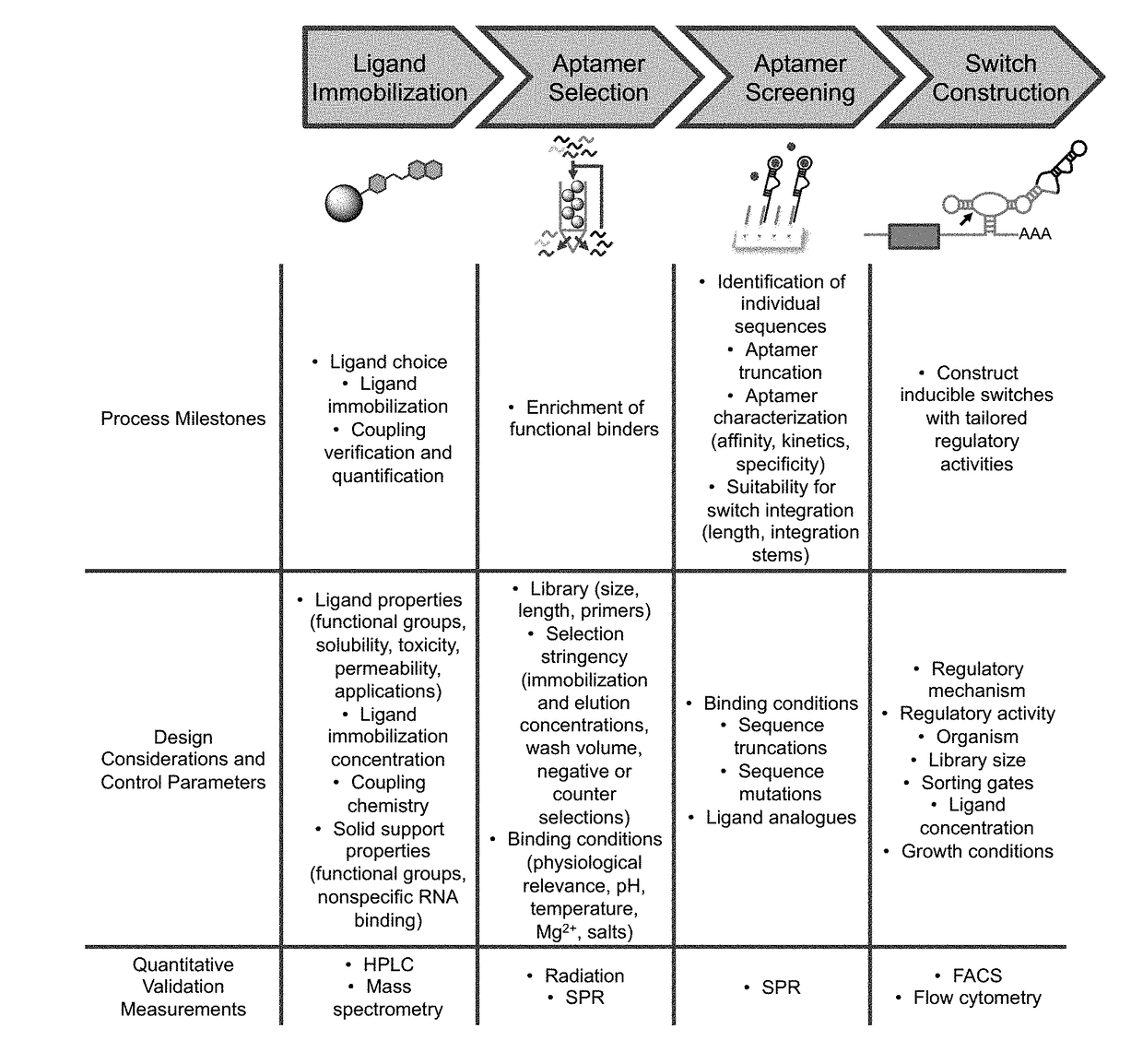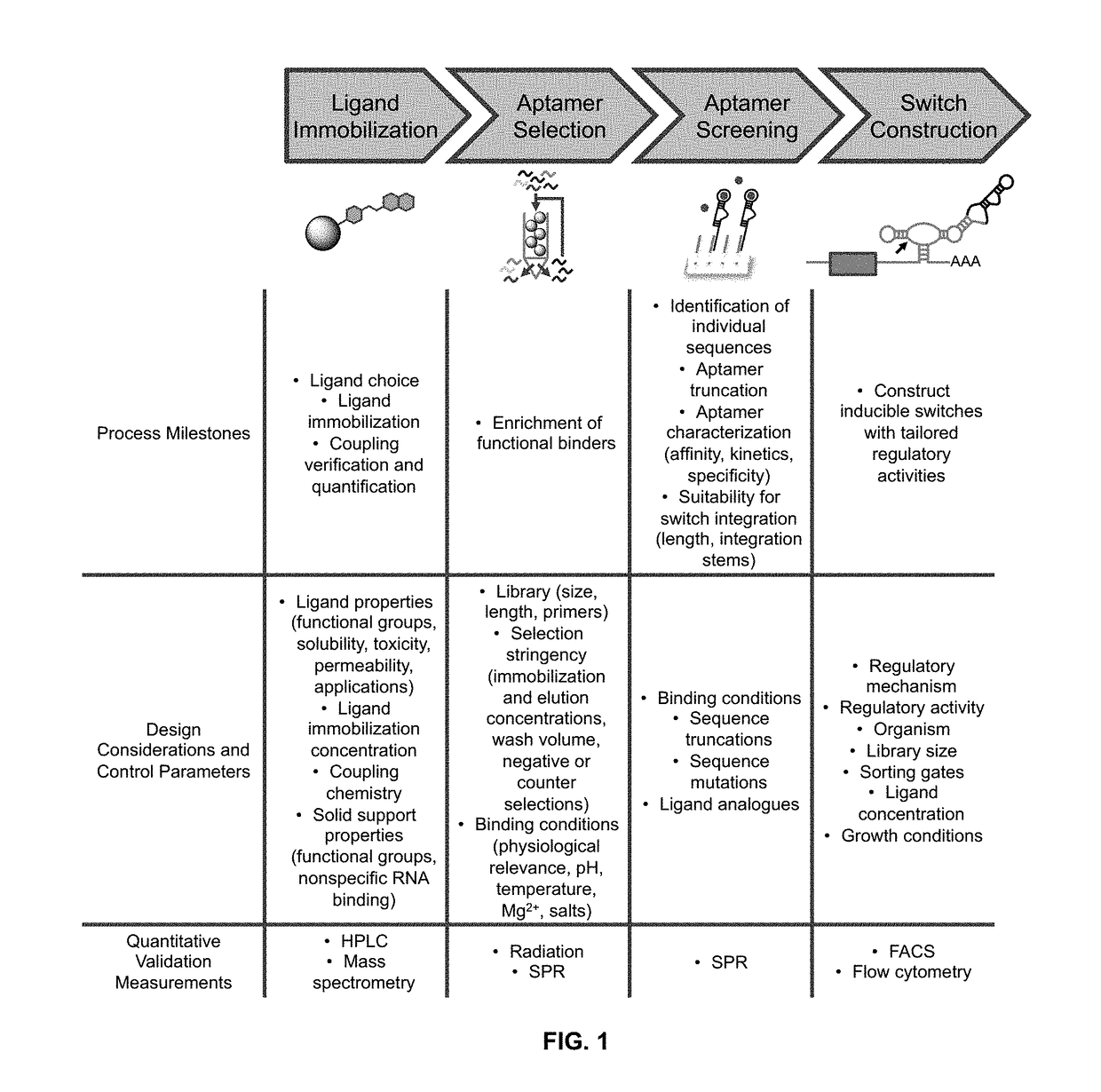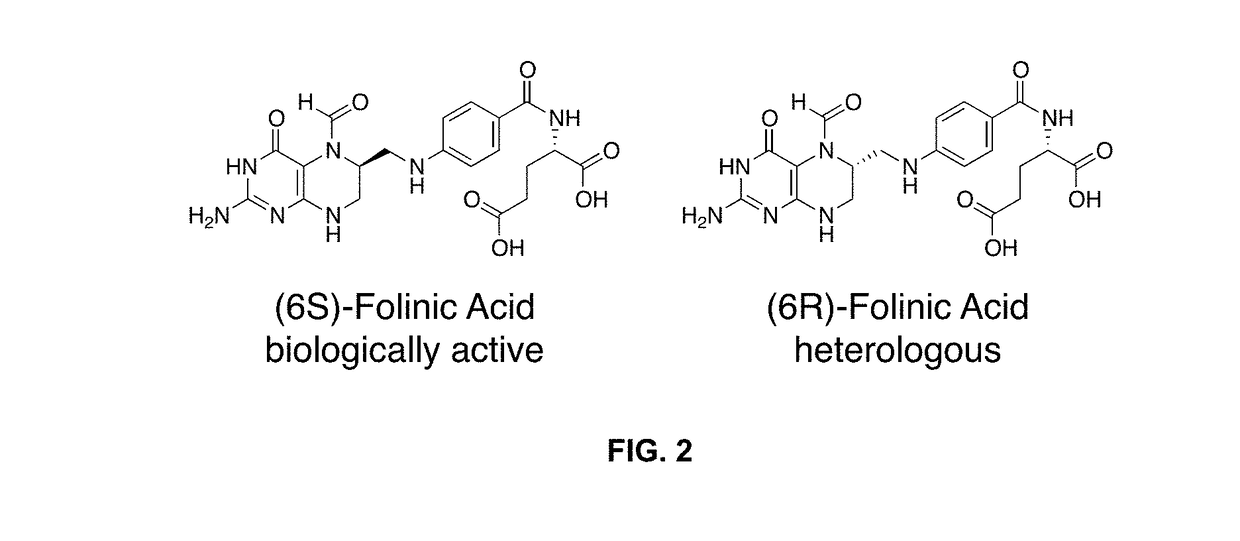Compositions and methods for regulation of gene expression with, and detection of, folinic acid and folates
a technology of folic acid and folate, which is applied in the direction of gene therapy, splicing alteration, biochemistry apparatus and processes, etc., can solve the problems of limited set and difficulty in functional decoupling from native cellular regulation, and achieve the effect of regulating transcription, stability and/or translation of the mrna
- Summary
- Abstract
- Description
- Claims
- Application Information
AI Technical Summary
Benefits of technology
Problems solved by technology
Method used
Image
Examples
example 1
Programmable and Conditional Gene Control by a Clinical Drug
[0126]Natural biological systems rely on the ability to sense and respond to molecular and environmental stimuli through dynamic regulation of gene expression. Engineering synthetic biological systems similarly requires comparable sensing and control capabilities, particularly for effector ligands orthogonal to those found in nature or suitable for specialized applications such as clinical therapeutics. The construction of synthetic RNA regulatory switches responsive to the clinical drug folinic acid (leucovorin) is described herein. RNA aptamer sensors that bind with high specificity and affinity to either the (6R)- or (6S)-diastereomers of folinic acid were generated de novo through in vitro selection. Selection design principles were applied to favor discovery of high affinity aptamers that function under intracellular conditions, requiring as few as 21 nucleotides and with dissociation constants as low as 19.2 nM and li...
example 2
[0169]Aptamer mutations were studied to assess their effect on ligand binding to better understand which nucleotides were involved in or necessary for binding and to identify sequence flexibility that could be leveraged during switch design. In particular, integration into regulatory switch platforms generally requires one or more stems through which to couple the aptamer to the actuator. Thus, identifying potential integration stems whose sequence can be modified for facile integration while not affecting ligand binding is a critical step in switch design.
[0170]Aptamer stems were assayed for sequence flexibility or constraints by shuffling nucleotide identify (A to C, C to A, G to U, and U to G to maintain U-G basepairing). If shuffled stem sequences retained binding ability, stems were labeled as sequence unconstrained without testing all six possible base pairs (A-U, U-A, C-G, G-C, U-G, G-U). Terminal stem loop lengths were tested to minimize stem length, and individual point mut...
example 3
[0174]Rational design of ribozyme-based switches in yeast. Folinic acid-responsive switches were first rationally designed to demonstrate aptamer in vivo activity. The strand displacement mechanism previously used to rationally design theophylline- and tetracycline-responsive switches was tested on two different switch architectures: aptamer integration off of the hammerhead loop II and integration through hammerhead helix III (FIG. 20). For loop II integration, transmitter sequences from previously characterized switches were used as a starting point to join folinic acid aptamers FA8-4 and FA8-3 to the sTRSV hammerhead ribozyme, tested in silico using RNA folding programs, and modified as necessary to achieve proper folding of the ribozyme and aptamer domains.
[0175]Helix III integration represents an alternate switch architecture that has not previously been reported. Aptamer integration through helix III requires two integration stems on the aptamer: one for ribozyme helix III int...
PUM
| Property | Measurement | Unit |
|---|---|---|
| Fraction | aaaaa | aaaaa |
| Fraction | aaaaa | aaaaa |
| Fraction | aaaaa | aaaaa |
Abstract
Description
Claims
Application Information
 Login to View More
Login to View More - R&D
- Intellectual Property
- Life Sciences
- Materials
- Tech Scout
- Unparalleled Data Quality
- Higher Quality Content
- 60% Fewer Hallucinations
Browse by: Latest US Patents, China's latest patents, Technical Efficacy Thesaurus, Application Domain, Technology Topic, Popular Technical Reports.
© 2025 PatSnap. All rights reserved.Legal|Privacy policy|Modern Slavery Act Transparency Statement|Sitemap|About US| Contact US: help@patsnap.com



